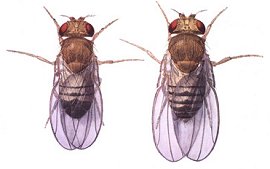 |
| Male and female Drosophila flies |
Illustration by NASA |
Fruit Fly
-
Scientific Name:
- Drosophila spp.
-
Family:
- Drosophilidae (fruit flies, vinegar flies, pomace flies)
-
Order:
- Diptera (flies)
-
U.S. Distribution:
- All states
This page has three tables, (1) Identification, (2) Look-alike Pests, and (3) Biology and Habits.
Identification
| Match the Shape and Size | Match the Color |
|---|---|
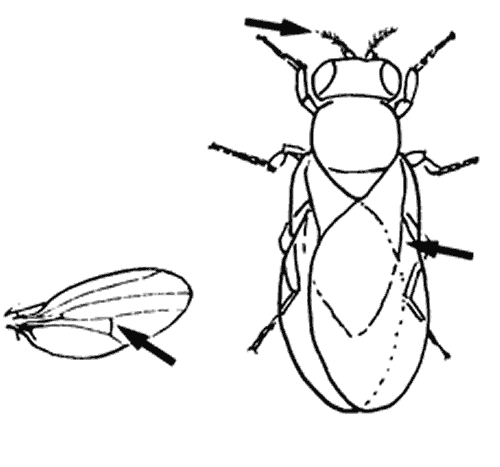 |
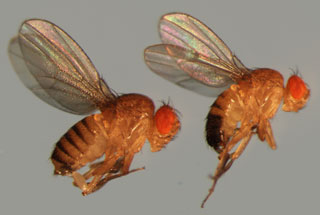 |
|
|
| Illustration © Pinto & Associates | Photo © The Exploratorium, www.exploratorium.edu |
Look-alike Pests
| Look-alike Pest | Differences |
|---|---|
Humpbacked fly or phorid fly |
No cross vein in wing; large, humped thorax; small head; eyes not red; often runs jerkily across surfaces rather than flying; hind femur flattened |
Fungus gnats (2 families, many species ) |
Legs long in relation to body; mosquito-like; No feathery bristle ("plumose") antennae; eyes not red |
Biology and Habits
| Match the Food and Site | Match the Habits and Damage |
|---|---|
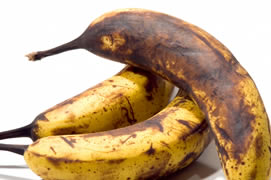 |
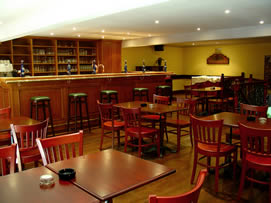 |
|
|
| photo © iStockphoto/James McQuillan | photo © iStockphoto/Matt Olsen |